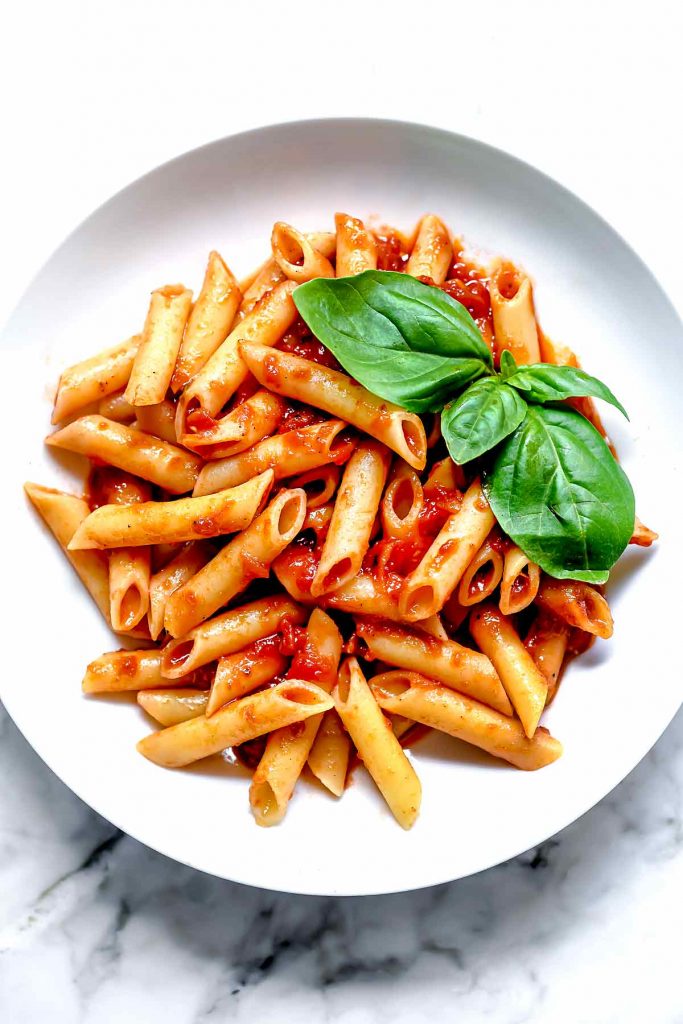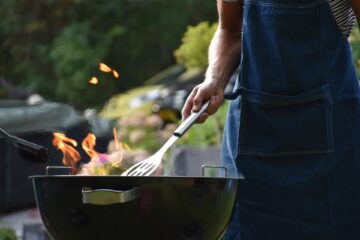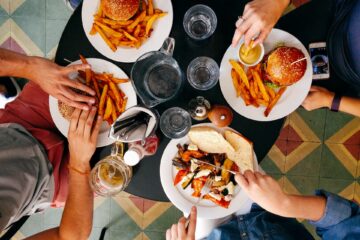Considering the soreness and sensitivity that would be experienced until complete recovery, it is just as understandable as it is expected for someone who has just had a wisdom teeth removal to be unsure of what to eat. Understanding that your diet will have to change is the first step to your recovery, obeying instructions and conditions to food restrictions is the next.
Let’s talk about how easy and possible it is for you to eat pasta after wisdom teeth removal while shedding some light on the types of food that are okay to eat after wisdom teeth removal and those that aren’t.
Can I Eat Pasta After Wisdom Teeth Removal?
Yes, you can eat pasta after wisdom teeth removal, provided that the pasta is made soft and is allowed to cool first. You should also avoid sucking the pasta into your mouth as this could hurt the removal area.
What you can and can’t eat after wisdom teeth removal is dependent on the factors surrounding the removal and how fast you heal. Wisdom teeth removal can either be simple or complex – some might have to remove several teeth and others might require stitches. These kinds of removal typically take longer to heal and have more of an aftereffect compared to simple procedures with only one or two removals and zero stitches.
Some people also heal much faster than others and could start feeling all better immediately after the removal. Therefore, you can eat whatever you want if you feel comfortable enough to. For a smooth recovery, though, we recommend avoiding hard, crunchy, sticky, chewy, spicy, chunky, acidic, piping hot, or icy cold foods. Anything that would require a lot of chewing or large bites can hurt you and slow down your recovery.
Instead, you should eat soft and easy-to-chew foods that will not put a lot of stress on the removal area. Pasta is a great choice for this, it should be properly cooked and not chewy. It is important to note that the conventional pasta sauce would be far too acidic for someone in recovery, so you should choose the cream sauce or buttered pasta since they are less acidic.
Can I Eat Pasta After Tooth Extraction?
Yes, you can eat pasta after tooth extraction. Pasta is a good enough choice after any kind of tooth extraction. It is soft enough to require very little chewing, hence, reducing the tension on the removal area. It is advisable to chew closer to the front of your mouth and away from the removal area. You should also pair your pasta with less acidic sauces than the traditional ones.
How Long After Wisdom Teeth Removal Can I Eat Pasta?
You can eat pasta 24-48 hours after wisdom teeth removal depending on how comfortable you feel. Some people heal faster than others, so if you feel comfortable eating pasta immediately after the removal, then you should. Otherwise, you should stick to foods that require no chewing at all for the first 2 days after the removal. Foods like pudding, soups, and oatmeal are highly recommended.
If and when you choose to have pasta, avoid sucking or slurping it because that can remove a blood clot and cause a dry socket. You should also avoid having food that is overly spicy, hot, or acidic.

What Kind of Pasta Can You Eat After Wisdom Teeth Removal?
You can eat soft-cooked pasta with less acidic sauces like cream sauce after wisdom teeth removal. Pastina is the recommended kind of pasta for those recovering from wisdom teeth removal. It is small-sized, which makes it easier to chew. Cooking it to a very soft stage and pairing it with non-acidic sauces is the ideal pasta meal.
Read also: Can You Eat Chicken with Braces?
Understanding the Healing Process
After a wisdom teeth removal surgery, the healing process begins. During this time, the body works to repair the extraction site and grow new tissue, which will eventually close the wound. It’s important to understand the healing process so that you can take proper care of your mouth during this time and avoid complications.
The first stage of healing is the formation of a blood clot at the extraction site. This clot acts as a protective barrier, preventing food particles and bacteria from entering the wound. It’s important not to disturb this clot by rinsing your mouth vigorously, spitting forcefully, or drinking through a straw. Doing any of these things could dislodge the clot and delay the healing process.
Over the next few days, new tissue will begin to grow over the extraction site. This tissue is fragile and easily irritated, so it’s important to avoid eating hard, crunchy, or chewy foods that could damage it. In addition, the tissue may bleed or ooze for a few days after the surgery, so it’s important to avoid activities that could increase blood flow to the area, such as exercise or heavy lifting.
As the healing process continues, the extraction site will gradually close up, and new bone will begin to grow to fill the space left by the removed tooth. This process can take several weeks or even months, depending on the complexity of the extraction and the individual’s rate of healing. During this time, it’s important to continue following any post-operative instructions provided by your dentist or oral surgeon, such as taking pain medication or antibiotics as prescribed, and attending any follow-up appointments.
By understanding the healing process after a wisdom teeth removal surgery, you can take the necessary steps to ensure proper healing and avoid complications. This includes following a soft food diet for the first few days after the surgery, avoiding any activities that could disturb the extraction site, and keeping the area clean and free from debris. With proper care, you can expect to have a successful recovery and return to your normal activities in no time.
Benefits of Eating Pasta After Wisdom Teeth Removal
Eating pasta after wisdom teeth removal can have a number of benefits for patients. Not only is pasta a soft and easy-to-chew food, it’s also filling and nutritious. Here are some of the benefits of eating pasta after wisdom teeth removal:
- Soft texture: One of the main benefits of pasta is its soft and chewy texture. After a wisdom teeth removal surgery, the extraction site can be very sensitive, and eating hard or crunchy foods can be painful or even cause damage to the wound. Pasta, on the other hand, is easy to chew and won’t irritate the area.
- Filling: Another benefit of pasta is that it’s a filling food. Many pasta dishes are made with ingredients like vegetables, cheese, and meat, which can provide a satisfying and nutritious meal for patients who may be limited in what they can eat during their recovery period.
- Nutritious: Pasta can also be a nutritious food, providing important nutrients like carbohydrates, protein, and fiber. Whole grain pasta is particularly nutritious, as it contains more fiber and other important vitamins and minerals than regular pasta.
- Easy to prepare: Pasta is a quick and easy meal to prepare, making it a great option for patients who may not have the energy or ability to cook elaborate meals during their recovery period. With just a few simple ingredients, you can whip up a tasty and nutritious pasta dish in no time.
- Variety: Pasta is also a versatile food that can be prepared in a variety of ways. From classic spaghetti with tomato sauce to creamy Alfredo with penne, there are endless options for pasta dishes that can be adapted to meet your dietary needs and preferences.
Risks of Eating Pasta After Wisdom Teeth Removal
While eating pasta after wisdom teeth removal can be a good option for patients who need to follow a soft food diet, there are some risks to consider. Here are some potential risks of eating pasta after wisdom teeth removal:
- Food particles getting stuck in the extraction site: One of the main risks of eating pasta after wisdom teeth removal is that food particles can get stuck in the extraction site. This can lead to infection or inflammation, and delay the healing process. To avoid this, it’s important to rinse your mouth gently with warm salt water after eating and to avoid pasta dishes that contain small particles or bits of food that could get stuck in the wound.
- Irritation of the extraction site: Pasta dishes that are too hot or spicy can irritate the extraction site and cause pain or discomfort. It’s important to choose pasta dishes that are mild and easy to tolerate, and to avoid any ingredients that could irritate the area.
- Accidental injury: Another risk of eating pasta after wisdom teeth removal is accidental injury to the extraction site. Chewing too quickly or too vigorously can cause the wound to reopen or bleed, which can delay the healing process. To avoid this, it’s important to chew your food slowly and carefully, and to cut your pasta into small pieces to make it easier to eat.
- Indigestion: Some pasta dishes can be heavy or difficult to digest, which can cause indigestion or stomach upset. This can be especially problematic for patients who are taking pain medication or antibiotics, which can also cause stomach issues. To avoid this, it’s important to choose pasta dishes that are light and easy to digest, and to avoid overeating.
- Interference with the healing process: Finally, eating too much pasta or too many high-carbohydrate foods can interfere with the healing process after wisdom teeth removal. Carbohydrates can contribute to inflammation and delay the formation of new tissue, which can prolong the healing process. To avoid this, it’s important to balance your diet with other nutritious foods like protein, fruits, and vegetables.
Alternatives to Pasta
If you’re looking for alternatives to pasta that are safe to eat after wisdom teeth removal, there are plenty of soft and nutritious options to choose from. Here are some alternatives to pasta that you may want to consider:
- Yogurt: Yogurt is a soft and creamy food that’s easy to eat and provides important nutrients like protein, calcium, and probiotics. Look for plain, unsweetened yogurt or add your own fresh fruit for a healthy and tasty snack.
- Smoothies: Smoothies are another great option for patients who need to follow a soft food diet. They’re easy to make and can be packed with important nutrients like fruits, vegetables, and protein powder. Be sure to choose ingredients that are easy to blend and avoid any that could be difficult to chew, like nuts or seeds.
- Mashed potatoes: Mashed potatoes are a classic comfort food that’s easy to eat and provides important nutrients like potassium and vitamin C. Look for recipes that use milk or sour cream to make them creamy and flavorful.
- Scrambled eggs: Scrambled eggs are another soft and easy-to-eat food that’s packed with protein and other important nutrients. Be sure to cook them gently and add a little milk or cheese to make them extra soft and fluffy.
- Soups: Soups are a great option for patients who need to follow a soft food diet, as they can be easily pureed or blended to create a smooth and easy-to-eat consistency. Look for soups that are low in sodium and packed with nutritious ingredients like vegetables and lean protein.
- Applesauce: Applesauce is a soft and easy-to-eat snack that’s also packed with important nutrients like fiber and vitamin C. Look for unsweetened applesauce to avoid added sugars.
Tips for Eating Pasta After Wisdom Teeth Removal
If you’ve decided to eat pasta after wisdom teeth removal, there are some tips you can follow to ensure that you’re doing so safely and without any complications. Here are some tips for eating pasta after wisdom teeth removal:
- Choose soft pasta: To avoid irritating the extraction site, it’s important to choose soft pasta that’s easy to chew and won’t require a lot of effort to eat. Look for pasta shapes like macaroni, rotini, or bow ties, which are small and easy to chew.
- Cook the pasta until it’s very soft: To make the pasta even easier to eat, be sure to cook it until it’s very soft and tender. Overcooked pasta is better than undercooked pasta when you’re recovering from wisdom teeth removal.
- Cut the pasta into small pieces: Cutting the pasta into small pieces can make it easier to eat and can help prevent any accidental injury to the extraction site. Use a knife or scissors to cut the pasta into small bite-sized pieces before eating.
- Choose mild sauces: To avoid irritating the extraction site, it’s important to choose mild sauces that won’t be too spicy or acidic. Look for tomato sauce or creamy sauces like Alfredo, which are easy to tolerate.
- Avoid chunky sauces: Chunky sauces or sauces that contain small bits of food can get stuck in the extraction site and cause irritation or inflammation. Stick with smooth sauces that are easy to swallow.
- Chew slowly and carefully: It’s important to chew your food slowly and carefully when you’re recovering from wisdom teeth removal. Take small bites and chew each bite thoroughly before swallowing. This can help prevent any accidental injury to the extraction site.
- Rinse your mouth with warm salt water after eating: To help prevent any food particles from getting stuck in the extraction site, it’s important to rinse your mouth gently with warm salt water after eating. This can help keep the area clean and promote healing.
By following these tips, you can enjoy a safe and satisfying pasta meal after wisdom teeth removal. Just remember to take your time while eating, avoid any ingredients that could irritate the area, and take good care of your mouth during the healing process.
How Do You Get Pasta Out of Wisdom Teeth Holes?
First, you should try rinsing your mouth with a warm saltwater solution, herbal tea, or mouthwash. Ensure you do not rinse your mouth for the first 24 hours after the removal. For the herbal tea rinse, you should let the tea fall out of your mouth rather than spit it out. Some herbal teas you can use are turmeric, chamomile, and green tea. If you are going to use mouthwash, you should speak with your dentist beforehand.
If that does not work, you can try putting warm water into a syringe, spray bottle, or water flosser to direct the water to the specific area. We also recommend speaking with your dentist before trying out this method. Lastly, you can use a soft brush or cotton swab to gently remove the particle from the teeth hole.
Before trying any of these methods, you should consult your dentist so you don’t make matters worse. You should also note that having food stuck in your wisdom teeth hole is not necessarily bad. If it is not removed, your body would find a way of dealing with it.
What kind of pasta can you eat after wisdom teeth removal?
After wisdom teeth removal, it’s important to choose soft and easy-to-chew pasta to avoid irritating the extraction site. Some types of pasta that are safe to eat after wisdom teeth removal include:
- Small pasta shapes: Small pasta shapes like macaroni, rotini, bow ties, and penne are great options for patients who need to follow a soft food diet. These shapes are small and easy to chew, making them a good choice for those with a sensitive mouth.
- Overcooked pasta: Overcooked pasta is better than undercooked pasta when you’re recovering from wisdom teeth removal. Be sure to cook the pasta until it’s very soft and tender, which will make it easier to chew and swallow.
- Egg noodles: Egg noodles are a soft and delicate type of pasta that’s easy to eat and digest. They’re a good option for patients who may be experiencing stomach upset or digestive issues after their surgery.
- Fresh pasta: Fresh pasta is a softer and more delicate type of pasta than dried pasta. It’s often made with fewer ingredients and is less processed, which can make it easier to digest.
- Sauce considerations: When choosing pasta after wisdom teeth removal, it’s important to consider the sauce as well. Choose mild sauces like tomato sauce or creamy sauces like Alfredo that won’t be too spicy or acidic. Avoid chunky sauces or sauces that contain small bits of food that could get stuck in the extraction site.
In general, it’s a good idea to choose pasta dishes that are mild, easy to chew, and won’t require a lot of effort to eat. By choosing the right type of pasta and taking care while eating, you can enjoy a tasty and satisfying meal while also promoting proper healing.
Read also: Can You Eat Doritos with Braces?
Foods to Eat After Wisdom Teeth Removal
Here’s a list of foods you can eat after wisdom teeth removal:
- Pasta or pastina
- Pancakes
- Mashed potatoes
- Cake
- Eggs
- Popsicles
- Meatloaf
- Ramen noodles
- Mac and cheese
- Hummus
- Diary
- Avocado
- Beans
- Oatmeal
- Squash
- Soups and broths
- Sliced and cut fish or meats
- Sweet potatoes
- Soft sandwiches
- Scrambled eggs
- Soft rice
- Steamed veggies
- Sour cream
- Soufflé
- Sherbet
- Soft bread
- Soft cheese
- Risotto
- Polenta
- Pudding, custard, or flan
- Mousse
- Apple sauce
- Melons
- Mangoes
- Mashed bananas
- Ground chicken/beef/turkey
- Doughnuts
- Custard
- Soggy cereal
- Pumpkin
- Tofu
- Casseroles
- Semolina
- Baby food
- Fish
Conclusion
Regardless of what you choose to eat after wisdom teeth removal, you should make sure you are comfortable while eating it and you clean up as you should. Always eat healthy to improve your recovery and maybe have your dentist on speed dial just in case.




